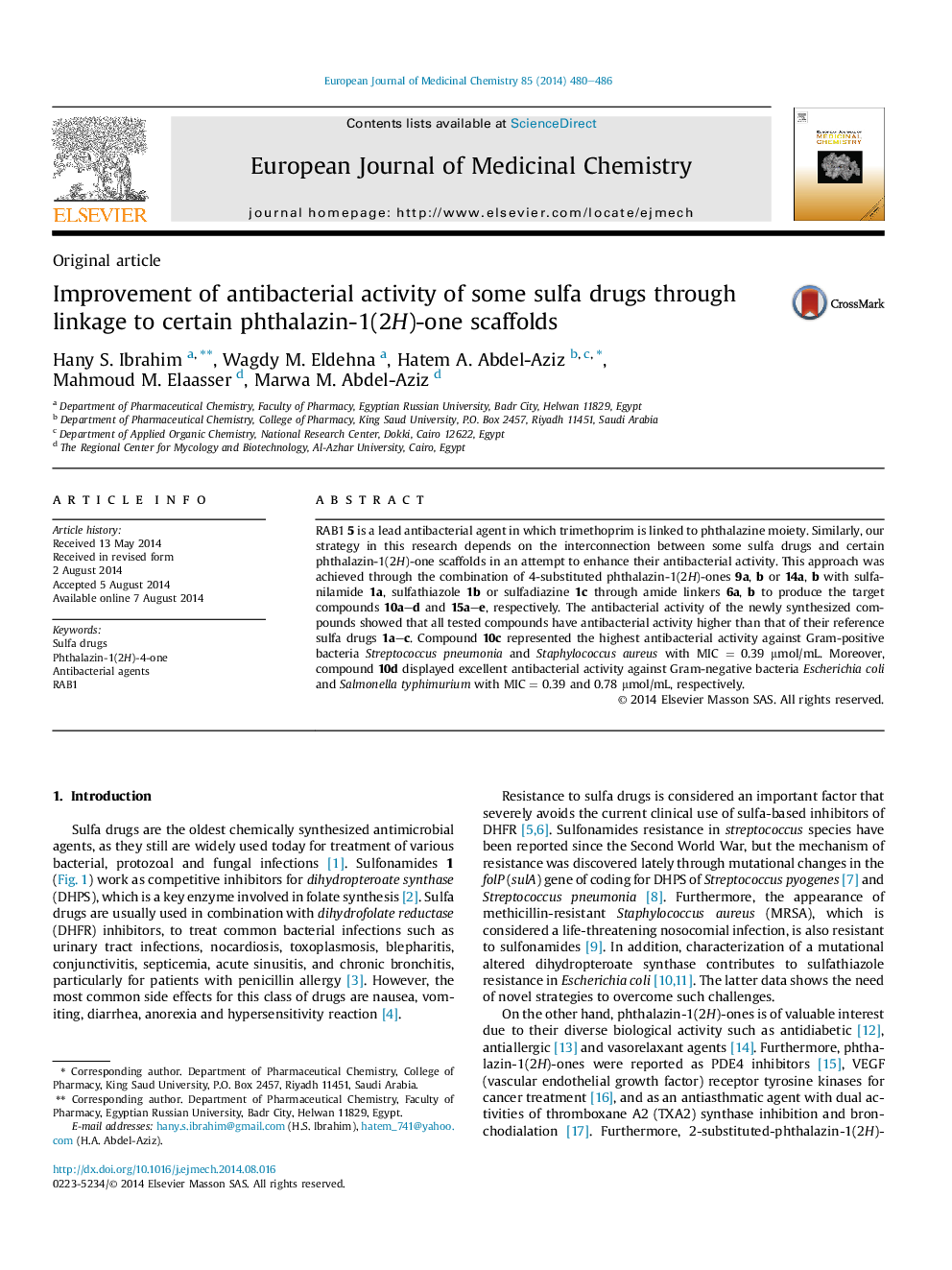| Article ID | Journal | Published Year | Pages | File Type |
|---|---|---|---|---|
| 1392343 | European Journal of Medicinal Chemistry | 2014 | 7 Pages |
•Sulfa drugs 1a–c were linked to phthalazin-1(2H)-ones 9a, b or 14a, bvia amides 7a–e.•10a–d and 15a–e were designed according to a similar approach of RAB1 5.•10a–d and 15a–e showed antibacterial activity higher than that of their reference drugs.•10c possessed MIC = 0.39 μmol/mL against Streptococcus pneumonia and Staphylococcus aureus.
RAB1 5 is a lead antibacterial agent in which trimethoprim is linked to phthalazine moiety. Similarly, our strategy in this research depends on the interconnection between some sulfa drugs and certain phthalazin-1(2H)-one scaffolds in an attempt to enhance their antibacterial activity. This approach was achieved through the combination of 4-substituted phthalazin-1(2H)-ones 9a, b or 14a, b with sulfanilamide 1a, sulfathiazole 1b or sulfadiazine 1c through amide linkers 6a, b to produce the target compounds 10a–d and 15a–e, respectively. The antibacterial activity of the newly synthesized compounds showed that all tested compounds have antibacterial activity higher than that of their reference sulfa drugs 1a–c. Compound 10c represented the highest antibacterial activity against Gram-positive bacteria Streptococcus pneumonia and Staphylococcus aureus with MIC = 0.39 μmol/mL. Moreover, compound 10d displayed excellent antibacterial activity against Gram-negative bacteria Escherichia coli and Salmonella typhimurium with MIC = 0.39 and 0.78 μmol/mL, respectively.
Graphical abstractThe interconnection between sulfa drugs 1a–c and phthalazin-1(2H)-ones 9a, b or 14a, b produced the potent broad-spectrum antibacterial agents 10a–d, 15a–e with antibacterial activity higher than that of their reference sulfa drugs 1a–c.Figure optionsDownload full-size imageDownload as PowerPoint slide
